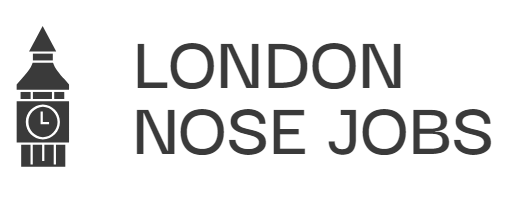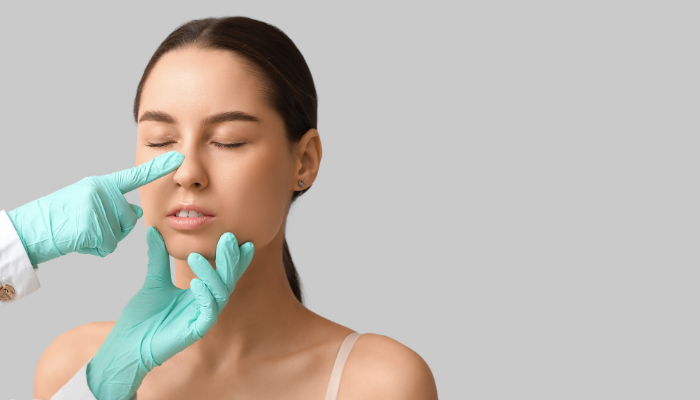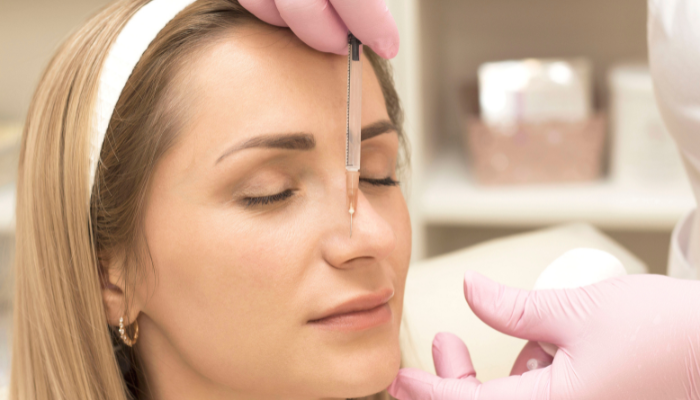Ever looked in the mirror and thought about changing your nose without going through surgery? You’re not alone. Many people are considering non-surgical options to tweak their noses. Whether it’s for a more refined look or to correct minor imperfections, non-surgical nose reshaping has become a popular choice.
This article explores the possibilities and methods available for reshaping your nose without surgery, giving you insights into what works and what to expect.
Key Takeaways
- Non-surgical nose reshaping involves techniques like dermal fillers and liquid rhinoplasty.
- Benefits include immediate results, lower costs, and no downtime compared to surgical options.
- Liquid rhinoplasty uses fillers to alter the nose’s shape temporarily, with results lasting several months.
- It’s important to consult a qualified practitioner to ensure safety and effective results.
- Alternative methods like makeup contouring and nose exercises have limited effectiveness and should be approached with caution.
Understanding Non-Surgical Nose Reshaping
What Is Non-Surgical Nose Reshaping?
Non-surgical nose reshaping, often called liquid rhinoplasty or liquid nose job, is a minimally invasive procedure designed to alter the shape of your nose using injectable fillers. It’s a great option if you’re looking for subtle changes without the commitment and recovery time of surgery.
Think of it as contouring, but with longer-lasting (though temporary) results. It can address concerns like asymmetry, bumps, or a drooping tip. It’s quick, usually done in under half an hour, and you can see the difference almost immediately.
Benefits of Non-Surgical Techniques
Why are people choosing the non-surgical route? Well, there are quite a few perks:
- No Downtime: You can usually get back to your normal activities right away.
- Lower Cost: Generally, it’s more affordable than traditional surgery.
- Reversible (Sometimes): If you don’t like the results, some fillers can be dissolved.
- Less Risk: No general anaesthesia or incisions mean fewer potential complications.
It’s important to remember that non-surgical reshaping isn’t a replacement for rhinoplasty. It’s best for minor adjustments and enhancements. If you’re after significant structural changes, surgery might still be the way to go.
Common Techniques Used
So, how do they actually reshape your nose without cutting? It all comes down to strategic placement of dermal fillers. Here’s a quick rundown of common techniques:
- Filling Depressions: Adding volume to smooth out bumps or indentations.
- Tip Lift: Injecting filler to elevate a drooping nasal tip.
- Straightening: Correcting asymmetry by adding filler to one side of the nose.
- Camouflaging a dorsal hump: Adding filler above and below the hump to make it appear smaller and straighter.
These techniques can create the illusion of a straighter, more symmetrical nose without any incisions. Pretty neat, eh?
Exploring Liquid Rhinoplasty
Liquid rhinoplasty, also known as a non-surgical nose job, is gaining popularity as a minimally invasive alternative to traditional surgery. It involves using dermal fillers to reshape the nose without incisions. It’s a quick procedure, but let’s get into the details.
What Is Liquid Rhinoplasty?
Liquid rhinoplasty is a cosmetic procedure that uses injectable fillers, typically hyaluronic acid-based, to alter the shape of the nose. It’s a non-permanent solution for correcting minor imperfections, such as dorsal humps, asymmetry, or a poorly defined tip. It’s important to remember that this procedure is best suited for small adjustments rather than major reshaping.
How It Works
The procedure itself is relatively straightforward:
- The practitioner will assess your nose and discuss your desired outcome.
- The area is cleaned and a topical anaesthetic may be applied to minimise discomfort.
- Small amounts of filler are injected strategically into specific areas of the nose.
- The practitioner will then gently massage and mould the filler to achieve the desired shape.
The whole process usually takes between 15 to 45 minutes, making it a convenient option for those with busy schedules. The precision of the injections allows for targeted corrections, offering a subtle yet noticeable improvement.
Expected Results and Longevity
Results from liquid rhinoplasty are visible almost immediately. You can expect to see a smoother nasal contour, improved symmetry, or a more refined tip. However, it’s crucial to have realistic expectations. Liquid rhinoplasty can’t reduce the size of the nose or correct significant structural issues.
The longevity of the results varies depending on the type of filler used and individual factors, but typically lasts between 6 to 18 months. After this period, the filler gradually breaks down, and the nose will return to its original shape. Maintenance treatments are required to prolong the effects.
The Role of Dermal Fillers

So, dermal fillers – they’re not just for lips and cheeks anymore! Turns out, they can play a pretty significant role in reshaping your nose without surgery. It’s all about using these injectable gels to subtly alter the contours and create a more balanced appearance.
Let’s get into the nitty-gritty.
Types of Fillers Used
When it comes to noses, not just any filler will do. Hyaluronic acid (HA) fillers are the most common choice, and for good reason. They’re temporary, which means if you don’t like the results, they can be dissolved. Plus, they offer a natural-looking finish. Some popular HA filler brands include Juvederm and Restylane.
Other fillers, like calcium hydroxylapatite (Radiesse), are sometimes used, but they’re less common for noses due to their longer-lasting nature and potential for a less flexible result. It’s really important to chat with your practitioner about which filler they recommend and why.
How Fillers Reshape the Nose
Okay, so how does injecting a gel actually change the shape of your nose? Well, it’s all about strategic placement. Fillers can be used to:
- Smooth out bumps and indentations.
- Add volume to create symmetry.
- Lift the tip of the nose.
- Make the nose appear straighter.
The key is that fillers add volume; they don’t remove anything. This means they’re best for correcting minor imperfections rather than drastically reducing the size of your nose. The procedure itself usually takes about 15-30 minutes, and you’ll see results almost immediately. It’s pretty cool, actually.
Safety and Side Effects
Like any cosmetic procedure, there are risks involved with using dermal fillers in your nose. Common side effects include:
- Swelling
- Bruising
- Redness
- Tenderness
These usually subside within a few days. However, there are more serious, though rare, risks, such as vascular occlusion (when filler blocks a blood vessel), which can lead to tissue damage. That’s why it’s absolutely crucial to choose a qualified and experienced practitioner who knows the anatomy of the nose inside and out. They should also be able to manage any complications that might arise.
Alternative Methods for Nose Reshaping
Nose Exercises: Do They Work?
So, you’ve seen those videos online promising a perfect nose through a series of daily exercises? I get it, the idea is tempting. The truth? The science is pretty shaky on this one. While facial exercises can tone muscles, they’re unlikely to significantly alter the underlying structure of your nose, which is primarily cartilage and bone. T
hink of it like trying to reshape your skull with a few stretches – it’s just not how things work. Some people swear by them, but don’t expect dramatic changes.
Makeup Techniques for Nose Contouring
Makeup is where the real magic happens, and it’s all about creating illusions. With the right shading and highlighting, you can make your nose appear slimmer, shorter, or more defined. It’s like being an artist, but your canvas is your face. Here’s a basic rundown:
- Contouring: Use a matte bronzer or contour shade (2-3 shades darker than your skin tone) along the sides of your nose to create shadows, making it appear narrower.
- Highlighting: Apply a shimmer or matte highlighter down the bridge of your nose to bring it forward and create definition.
- Blending is Key: Harsh lines are a no-no. Blend, blend, blend until the contour and highlight seamlessly melt into your skin.
Honestly, makeup contouring is a game-changer. It’s temporary, yes, but it’s also non-committal and allows you to experiment with different looks without any lasting effects. Plus, it washes off at the end of the day!
Home Remedies and Their Effectiveness
Let’s be real, the internet is full of weird and wonderful home remedies promising all sorts of things. When it comes to reshaping your nose, you’ll find everything from ice massages to garlic paste (yes, really!). But do any of these actually work? Sadly, the answer is almost certainly no.
There’s absolutely no scientific evidence to support the idea that applying topical treatments or performing strange rituals can alter the shape of your nose. Save your time and your skin – stick to proven methods, or just embrace your natural nose!
Consultation and Choosing a Practitioner
The next step is finding a qualified practitioner to guide you. It’s not just about the procedure itself, but also about having someone you trust and who understands your goals. Let’s break down what to expect and how to make the best choice.
What to Expect During a Consultation
Think of the consultation as a relaxed chat where you can share what you’re hoping to achieve. The practitioner should listen carefully, assess your nose, and explain whether a non-surgical approach is suitable for you.
They’ll probably take photos to help with planning and to show you potential results. Don’t be shy about asking questions – it’s your face, after all! A good consultation should cover:
- A thorough examination of your nasal structure.
- A discussion of your aesthetic goals and expectations.
- An explanation of the procedure, including potential risks and benefits.
- A review of your medical history to ensure you’re a suitable candidate.
Questions to Ask Your Practitioner
Come prepared with a list of questions. Here are a few to get you started:
- What experience do you have with non-surgical nose reshaping?
- Can I see before-and-after photos of your previous patients?
- What type of filler do you use, and why?
- What are the potential risks and side effects, and how are they managed?
- What is your plan if I’m not happy with the results?
It’s also a good idea to ask about their qualifications and training. Don’t be afraid to check their credentials and read reviews from other patients. Your safety and satisfaction are paramount.
Finding a Qualified Specialist
Finding the right practitioner is essential. Look for someone who is a qualified doctor, nurse, or cosmetic surgeon with specific training and experience in non-surgical nose reshaping. Don’t be tempted by deals that seem too good to be true – this is your face we’re talking about! Here’s how to find a good one:
- Check their qualifications and registration with relevant medical bodies.
- Read online reviews and testimonials from previous patients.
- Ask for recommendations from friends or family.
- Attend consultations with several practitioners before making a decision.
Post-Procedure Care and Maintenance
It’s really important to look after your nose properly to make sure you get the best possible results and avoid any problems. Let’s walk through what you need to know.
Caring for Your Nose After Treatment
Alright, first things first: be gentle! Your nose might feel a bit tender, and that’s totally normal. Here’s a few things I’d recommend:
- Avoid touching or putting pressure on your nose for at least the first few days. This includes wearing glasses that sit on your nose. If you really need to wear glasses, try taping them to your forehead to keep them off your nose.
- Apply a cold compress gently to reduce any swelling or bruising. Do this for about 15-20 minutes at a time, several times a day.
- Sleep on your back with your head elevated for the first few nights. This helps to minimise swelling.
- Skip strenuous exercise for a week or so. You don’t want to increase blood flow to the area and risk complications.
It’s also a good idea to avoid extreme temperatures, like saunas or very hot showers, as these can affect the fillers. And definitely stay out of the sun! If you must be outside, wear a hat and apply sunscreen.
Managing Expectations
Okay, let’s be real: non-surgical nose reshaping gives great results, but it’s not magic. It’s important to have realistic expectations about what can be achieved. The results are subtle, and they’re not permanent.
- Remember that fillers are temporary, so the effects will fade over time. You’ll probably need top-up treatments every 12-18 months to maintain your new nose shape.
- Don’t compare your results to those of surgical rhinoplasty. Non-surgical options are great for minor tweaks, but they can’t achieve the same dramatic changes as surgery.
- Be patient! It can take a few weeks for the swelling to go down completely and for the fillers to settle into their final position.
When to Seek Follow-Up
Most of the time, everything goes smoothly after a non-surgical nose job. But, it’s important to know when to get in touch with your practitioner. Here are a few red flags:
- Severe pain that doesn’t go away with over-the-counter pain relief.
- Signs of infection, such as increased redness, swelling, warmth, or pus.
- Sudden vision changes or any other unusual symptoms.
- If you’re just generally worried about something, it’s always best to get it checked out. Your practitioner is there to support you, so don’t hesitate to reach out.
Comparing Surgical and Non-Surgical Options
Choosing between surgical nose reshaping and non-surgical nose reshaping can feel like a big decision. Both have their own set of advantages and disadvantages, and the best option really depends on your individual needs and what you’re hoping to achieve. Let’s break down the key differences to help you make an informed choice.
Pros and Cons of Each Method
Surgical rhinoplasty is a more invasive procedure, but it can offer permanent and dramatic changes to the shape and structure of your nose. It’s often the preferred choice for people who need significant corrections or have breathing problems. However, it involves a longer recovery period, higher costs, and potential risks associated with surgery.
Non-surgical rhinoplasty, on the other hand, is less invasive and involves injecting dermal fillers to reshape the nose. It’s a great option for minor corrections and offers immediate results with minimal downtime. The downside is that the results are temporary, usually lasting from several months to a couple of years, and it can’t address functional issues like breathing difficulties.
Here’s a quick comparison:
| Feature | Surgical Rhinoplasty | Non-Surgical Rhinoplasty |
|---|---|---|
| Invasiveness | High | Low |
| Results | Permanent | Temporary |
| Downtime | Longer | Minimal |
| Cost | Higher | Lower |
| Corrective Power | Significant | Minor |
Cost Considerations
The cost of nose reshaping varies widely depending on the method you choose, the complexity of the procedure, and the practitioner’s fees. Surgical rhinoplasty typically costs significantly more than non-surgical options. You’ll also need to factor in the costs of anaesthesia, hospital fees, and post-operative care.
Non-surgical rhinoplasty is generally more affordable upfront, but remember that you’ll need to repeat the treatment periodically to maintain the results. Over time, these repeated treatments can add up, so it’s worth considering the long-term financial implications.
Long-Term Outcomes
Surgical rhinoplasty offers permanent results, so you won’t need further treatments to maintain the new shape of your nose. However, it’s important to have realistic expectations and understand that the final outcome may take several months to fully materialise as swelling subsides.
With non-surgical rhinoplasty, the results are temporary, and the fillers will eventually be absorbed by the body. This means you’ll need to undergo repeat treatments every few months to maintain the desired shape. While this can be seen as a disadvantage, it also offers the flexibility to adjust the results over time or even reverse the procedure if you’re not happy with the outcome.
Ultimately, the best option for you will depend on your individual goals, budget, and tolerance for risk. It’s essential to have a thorough consultation with a qualified practitioner to discuss your options and determine the most appropriate course of action.
Conclusion
Reshaping your nose without surgery is indeed a viable option for many people. With techniques like fillers and other non-invasive methods, you can achieve the look you desire without the commitment of surgery.
While results may vary and are often temporary, the ability to make subtle changes can be incredibly empowering. If you’re considering this route, it’s essential to consult with a qualified professional who can guide you through the process and help you achieve the best results. Remember, your comfort and confidence are what truly matter.
Frequently Asked Questions
What is non-surgical nose reshaping?
Non-surgical nose reshaping is a method to change the shape of your nose without surgery. It often involves using fillers to enhance or correct the nose’s appearance.
How long do the results of non-surgical nose reshaping last?
The results usually last for several months, but they are not permanent. You may need touch-ups to maintain the look you want.
Are there any risks with non-surgical nose reshaping?
Yes, while generally safe, there can be side effects like swelling or bruising. It’s important to choose a qualified practitioner.
Can I reshape my nose with exercises?
There is no scientific evidence that exercises can change the shape of your nose. They are unlikely to be effective.
What types of fillers are used for nose reshaping?
Common fillers include hyaluronic acid and calcium hydroxylapatite, which help to add volume and shape.
How do I choose the right practitioner for non-surgical nose reshaping?
Look for a qualified and experienced professional. Ask about their training, see before-and-after photos, and read reviews.






